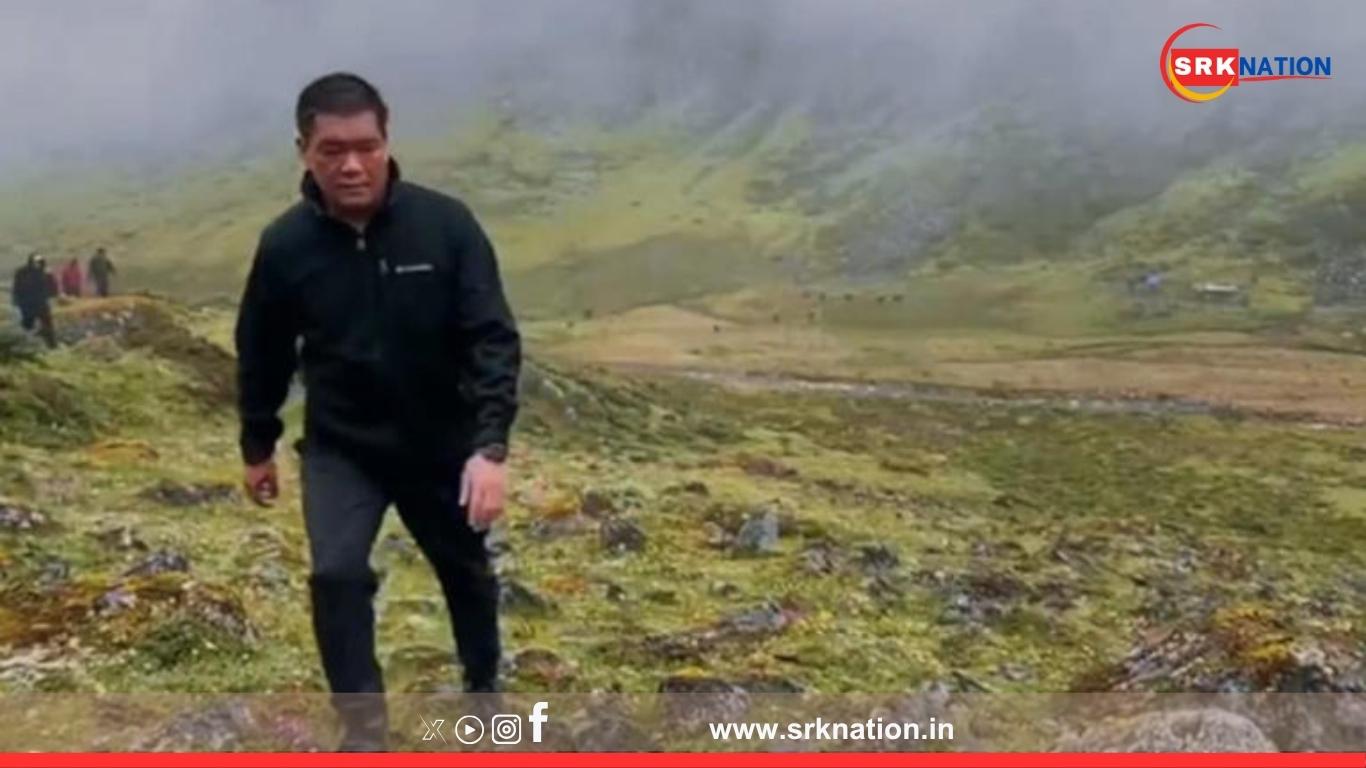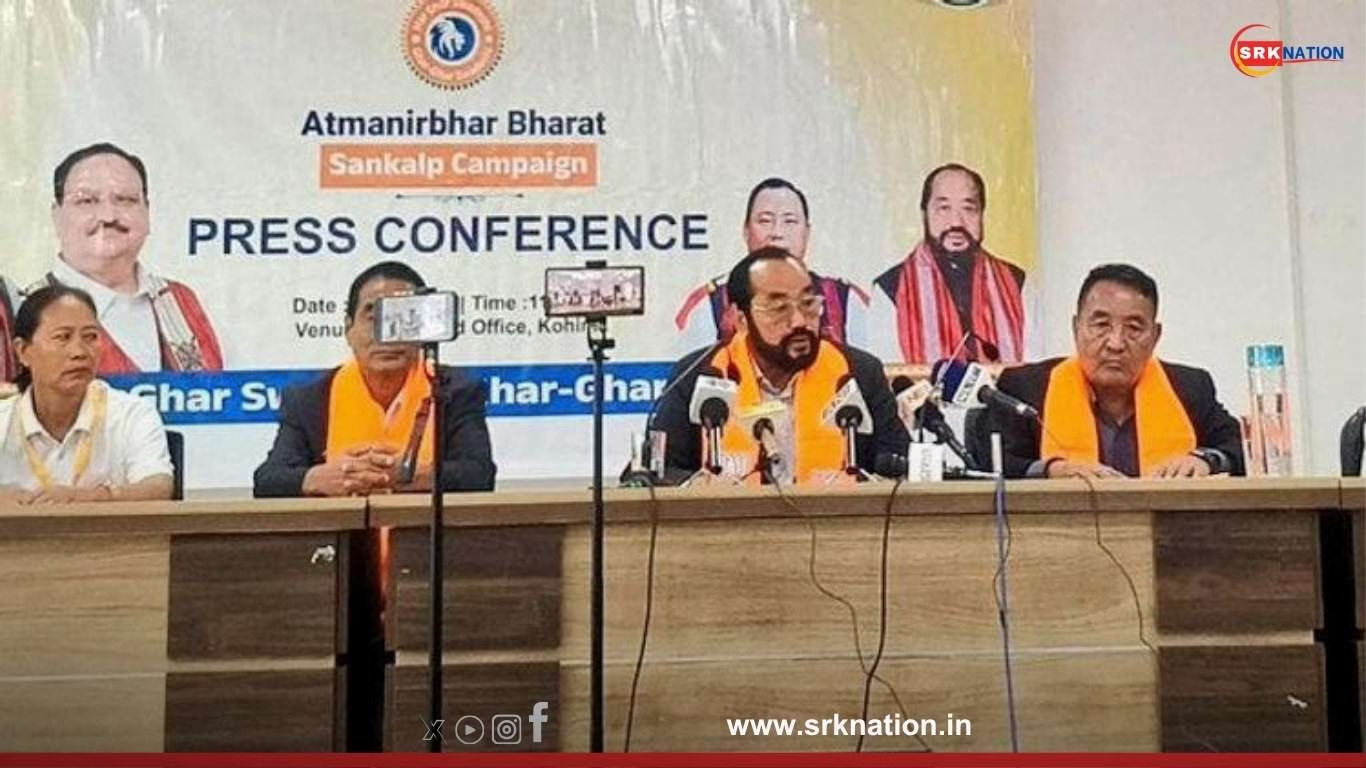In a strong and unequivocal statement, Arunachal Pradesh Chief Minister Pema Khandu asserted India’s sovereignty over the state, countering China’s repeated claims by highlighting historical facts and the state’s shared border with Tibet, not directly with China.
Context: China’s Persistent Claims Over Arunachal Pradesh
China has long claimed the Indian state of Arunachal Pradesh as part of its territory, referring to it as “South Tibet”. Recently, tensions rose further after Beijing renamed 30 locations within Arunachal Pradesh in official Chinese maps. This provocation prompted sharp rebuttals from New Delhi, reiterating that Arunachal Pradesh is an integral part of India.
CM Pema Khandu’s Strong Rebuttal
Addressing the issue during an event in Tawang, CM Khandu said:
“We share our border with Tibet, not with China. This has been our land, our culture, and our people since time immemorial.”
His remarks carry significance as Tawang is a culturally rich region with strong Buddhist heritage historically linked to Tibet prior to China’s annexation in 1950.
India’s Position On The Arunachal-China Issue
India maintains that:
- Arunachal Pradesh is an inalienable part of India, as established by the McMahon Line agreed upon during the 1914 Simla Convention between British India and Tibet.
- China’s claims are baseless, as its control over Tibet began only after the 1950s annexation, decades after the boundary was delineated.
Recent Developments Along The LAC
| Timeline | Key Developments |
|---|---|
| April 2023 | China renames 11 places in Arunachal Pradesh |
| December 2022 | Indian and Chinese troops clashed in Yangtse sector near Tawang |
| July 2025 | China releases new list of 30 renamed locations in Arunachal, calling it “South Tibet” |
| July 2025 | CM Khandu counters, emphasising border with Tibet, not China |
China’s Strategy: Renaming As Psychological Warfare
Security experts describe China’s renaming strategy as an attempt to:
- Undermine India’s sovereignty through psychological operations.
- Legitimise its territorial claims before the international community.
- Pressurise India diplomatically during broader border negotiations.
Professor Brahma Chellaney, strategic affairs expert, observed:
“Renaming is part of China’s long-standing tactic to normalise its claims. But historical realities and ground control remain with India.”
Arunachal’s Geopolitical And Strategic Importance
- Location: Borders Bhutan, Myanmar, and Tibet Autonomous Region (China).
- Culture: Strong Tibetan Buddhist heritage, especially in Tawang, home to India’s largest monastery.
- Security: Houses key Indian Army formations defending the eastern sector of the Line of Actual Control (LAC).
Local Sentiment: Deep Anger Against Chinese Claims
People of Arunachal Pradesh consistently reject Chinese claims. Residents in Tawang, Itanagar, and other border towns express anger over China’s narrative attempts, reiterating their strong Indian identity and cultural autonomy.
Sonam Tsering, a teacher in Tawang, stated:
“Our monasteries, families, and traditions have been here long before China took over Tibet. They cannot erase our roots or identity.”
India’s Infrastructure Push In Arunachal Pradesh
In response to China’s border activities, India continues to strengthen its eastern frontier by:
- Accelerating border road and tunnel construction to improve military and civilian connectivity.
- Enhancing air connectivity, with advanced landing grounds in Tawang, Ziro, and Pasighat upgraded for rapid troop movement.
- Promoting tourism and economic development to integrate border communities and assert civilian presence.
Strategic Projects Underway
| Project | Details |
|---|---|
| Sela Tunnel | To provide all-weather connectivity to Tawang, enhancing troop deployment capability |
| Frontier Highway | Proposed along India-China border to connect border villages and deter Chinese incursions |
| Advanced Landing Grounds upgrade | Boosting IAF operational readiness along LAC |
China’s Reaction To CM Khandu’s Statement
Chinese state media dismissed Khandu’s remarks, continuing its “South Tibet” terminology. However, Indian officials maintain that China’s claims lack legal and historical standing.
International Perspective
The US and other Quad partners have increasingly supported India’s sovereignty, with statements acknowledging Arunachal Pradesh as part of India and criticising Chinese expansionism.
Future Implications
Security analysts warn of:
- More aggressive Chinese cartographic aggression in coming years.
- Increased border incursions, especially in Tawang and Upper Subansiri sectors.
- Continued psychological operations through renaming and propaganda to unsettle Indian claims.
What Lies Ahead
- India’s firm diplomatic stance, combined with infrastructure and military preparedness, is expected to continue.
- Local leadership’s articulation of ground realities, like CM Khandu’s remarks, will play a key role in shaping national and international narratives.
- Community development and cultural promotion will strengthen India’s hold on its border regions, ensuring their integration into the national mainstream.
Conclusion
Arunachal Pradesh Chief Minister Pema Khandu’s statement that “We share border with Tibet, not China” is a pointed reminder of historical realities and cultural truths that China’s geopolitical narratives seek to erase. His remarks echo the sentiment of millions in the state who identify proudly as Indians, rooted deeply in their Tibetan Buddhist heritage but secure within India’s democratic framework.
Disclaimer
This news content is based on official statements, security analyses, and public domain information. It is intended for informational and journalistic purposes only. Readers are advised to follow verified government releases for strategic and diplomatic updates.











